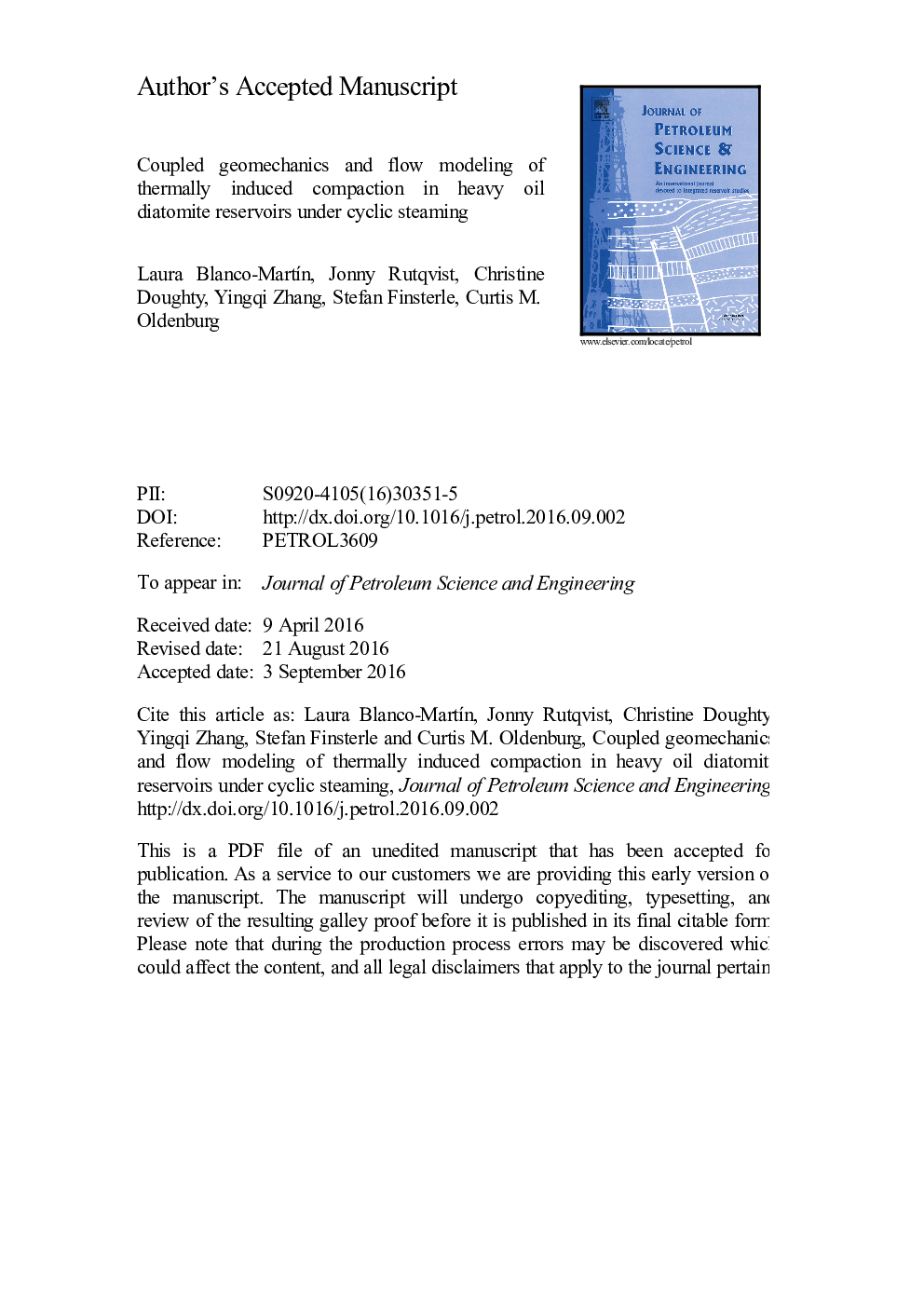| Article ID | Journal | Published Year | Pages | File Type |
|---|---|---|---|---|
| 8125746 | Journal of Petroleum Science and Engineering | 2016 | 32 Pages |
Abstract
Shallow, heavy oil diatomite reservoirs produced using cyclic steaming are often associated with significant subsidence. In cases where the pore pressure is not allowed to deplete noticeably, observed subsidence suggests a mechanism other than pressure decline is responsible. We perform coupled flow and geomechanics modeling to determine whether thermally induced compaction of the reservoir rock could play an important role in subsidence. First, we model laboratory-scale tests on diatomite samples subjected to mechanical and thermal loads. During these tests, substantial non-recoverable thermal compaction was measured. Using the modified Cam-clay model as a basis, thermally induced compaction is implemented by reducing the size of the yield surface as a function of temperature. This leads to a satisfactory modeling of the test results. Second, this new approach is used to model a symmetric pattern of wells in a generic heavy oil diatomite field produced using cyclic steaming. Results from simulations that consider or neglect thermally induced diatomite compaction show that thermal effects can potentially induce significant inelastic pore volume reduction and substantial subsidence.
Related Topics
Physical Sciences and Engineering
Earth and Planetary Sciences
Economic Geology
Authors
Laura Blanco-MartÃn, Jonny Rutqvist, Christine Doughty, Yingqi Zhang, Stefan Finsterle, Curtis M. Oldenburg,
